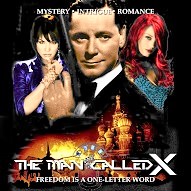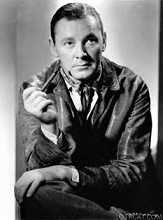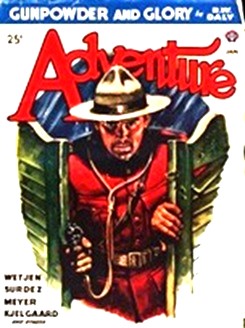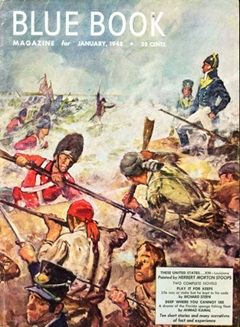
 The Man Called X (1944-45, 1946, 1947-48, 1950-52) aired “Ranee of Shalakar” on January 18, 1948 as the 42nd episode of the 78 broadcast during the 1947-48 run. This is the 7th episode we have showcased since February of 2019 and the first in 2 years, since February of 2023. Estimates are that there were 227 episodes from all years and that only 103 still exist, with 98 coming from the 1947-48 and 1950-52 runs. Well known and highly regarded British actor Herbert Marshall (1890-1966) played Ken Thurston, known as the eponymous Man Called X. He was an intelligence agent for the British, much as Brian Donlevy played undercover intelligence operative Steve Mitchell for the Americans in Dangerous Assignment. Marshall would star in all but three or four episodes of what came to be known as his series, and that includes every episode from 1944 through 1952, during which time he could be seen in any number of Hollywood films, appearing in varying roles with stars such as Marlene Dietrich, Greta Garbo, Bette Davis, Katherine Hepburn, Joan Crawford, Fredric March, Tony Curtis, Rex Harrison, and others too numerous to mention. Of genre interest he appeared as Inspector Charas in 1958’s classic SF film The Fly, which starred Vincent Price. Marshall lost his right leg in World War I, and wishing to do his part but unable to fight in WWII, at his own expense he traveled to numerous military hospitals in the United States and encouraged other amputees to remain positive and not think of themselves as handicapped. He would also appear often on the Armed Forces Radio Service (AFRS) as host of the popular war-time program The Globe Theater. From his other war-time projects as well as several films in which he starred, the proceeds went to several war charities. Marshall had not only worked in film since 1927 as both character actor and leading man, but along with his role in The Man Called X would have roles in at least a half dozen other radio programs, and would work in television in his later years, including two episodes of Alfred Hitchcock Presents and a recurring role in 77 Sunset Strip (1958-64). For his achievements in all of these media Marshall received a star on the Hollywood Walk of Fame in 1960.
The Man Called X (1944-45, 1946, 1947-48, 1950-52) aired “Ranee of Shalakar” on January 18, 1948 as the 42nd episode of the 78 broadcast during the 1947-48 run. This is the 7th episode we have showcased since February of 2019 and the first in 2 years, since February of 2023. Estimates are that there were 227 episodes from all years and that only 103 still exist, with 98 coming from the 1947-48 and 1950-52 runs. Well known and highly regarded British actor Herbert Marshall (1890-1966) played Ken Thurston, known as the eponymous Man Called X. He was an intelligence agent for the British, much as Brian Donlevy played undercover intelligence operative Steve Mitchell for the Americans in Dangerous Assignment. Marshall would star in all but three or four episodes of what came to be known as his series, and that includes every episode from 1944 through 1952, during which time he could be seen in any number of Hollywood films, appearing in varying roles with stars such as Marlene Dietrich, Greta Garbo, Bette Davis, Katherine Hepburn, Joan Crawford, Fredric March, Tony Curtis, Rex Harrison, and others too numerous to mention. Of genre interest he appeared as Inspector Charas in 1958’s classic SF film The Fly, which starred Vincent Price. Marshall lost his right leg in World War I, and wishing to do his part but unable to fight in WWII, at his own expense he traveled to numerous military hospitals in the United States and encouraged other amputees to remain positive and not think of themselves as handicapped. He would also appear often on the Armed Forces Radio Service (AFRS) as host of the popular war-time program The Globe Theater. From his other war-time projects as well as several films in which he starred, the proceeds went to several war charities. Marshall had not only worked in film since 1927 as both character actor and leading man, but along with his role in The Man Called X would have roles in at least a half dozen other radio programs, and would work in television in his later years, including two episodes of Alfred Hitchcock Presents and a recurring role in 77 Sunset Strip (1958-64). For his achievements in all of these media Marshall received a star on the Hollywood Walk of Fame in 1960.
This episode takes us to an ancient land where time seems to have stopped and old ways die hard. It manages to survive as an all but forgotten relic of a culture now almost extinct where the elderly maharaja has recently died, and now his daughter, the Ranee known as the High Priestess reigns. It is this backward seeming and secretive land wary of strangers—especially Americans—sheltered in the protective shadows north of India known as Shalakar where our story takes place, and where the High Priestess has been observed as being the most beautiful woman ever seen.

Ken Thurston, the British secret operative known officially as the man called X, gets involved when an American exporter is wrongly accused of “fraud and false dealings,” and is forbidden to leave Shalakar by order of the Ranee herself. Shalakar is an unfriendly land to any American. It is replete with colorful characters and sights, not least of which are ancient temples holding silent court over forgotten gods, innocent appearing snake charmers, a cult of fire pit walkers, and a guild of beggar assassins. And the truly beautiful Ranee is at the heart of it all, for Thurston knows that it is only through her can he and the American businessman return safely to the modern world they know, though danger and possible death await them around every turn of the narrow streets in which they find themselves running for their lives. Old Ways and the New World collide in this crossroads tale of “Ranee of Shalakar.”
Play Time: 22:15
{This episode of The Man Called X aired on a Sunday night in mid-January of 1948. The neighborhood gang could hardly wait for the end of school the following afternoon, for all day long their thoughts were turned to their home away from home, the corner newsstand, where they hoped to find more action and adventure stories like the one they had heard the night before. Adventure (1910-1971) was launched to cash in on the success of magazines like Argosy which was selling in the hundreds of thousands per month. But while Argosy and its ilk were offering a diverse smorgasbord of fiction, Adventure chose to concentrate on stories full of adventure and thrills. Though this was a successful formula for decades it gradually morphed in the mid-1950s to a pure men’s adventure magazine until its demise in 1971. In 1948 it was a monthly. Blue Book (1905-1956) began and was for many years a general interest magazine but with a focus on women and their concerns. Over time it broadened its appeal and would feature stories set in exotic locales around the world, tales of adventure and derring do by the likes of Ellery Queen, Edgar Rice Burroughs, and even the occasional story by Nelson Bond, a byline many would recognize as one who wrote in the science fiction genre. It was a monthly in 1948. Popular Detective (1934-1953) was a solid and well thought of detective pulp known for the consistently high quality of its fiction as told by many of the top tier practitioners in the field. It began as a monthly but after a few years spent its remaining years as a bi-monthly, which it was in 1948.}
[Left: Adventure, Jan./48 – Center: Blue Book, Jan./48 – Right: Popular Detective, Jan./48]



To view the entire list of weekly Old Time Radio episodes at Tangent Online, click here.